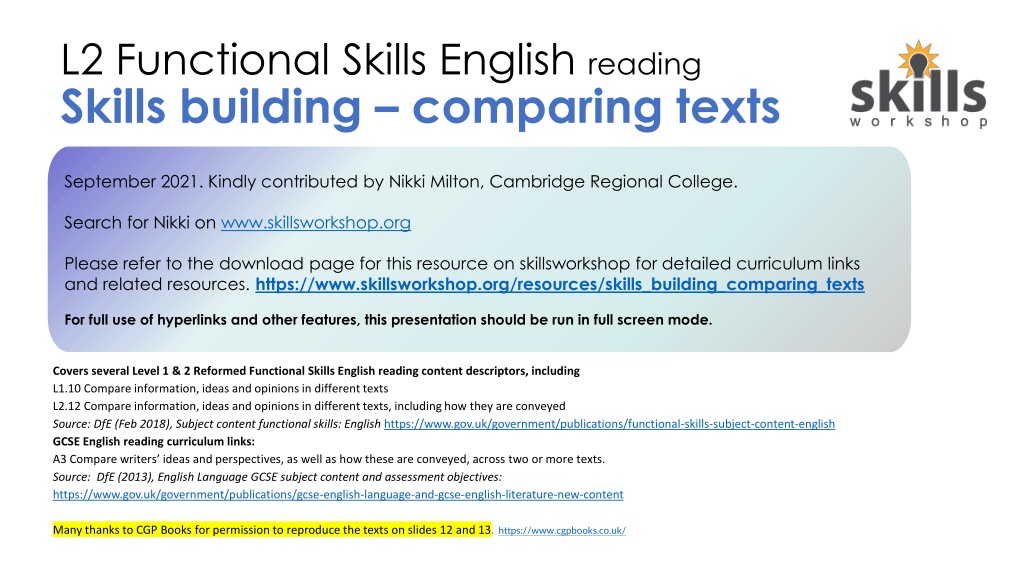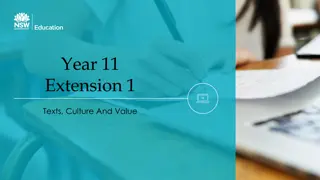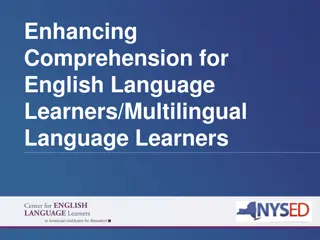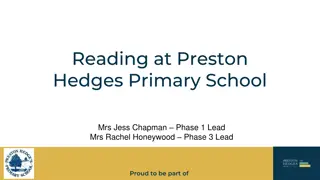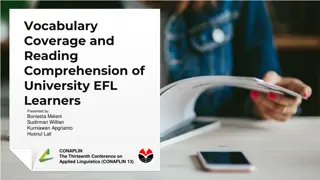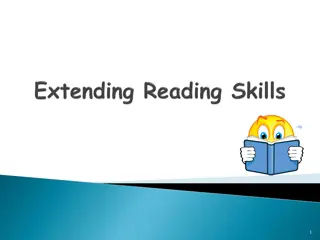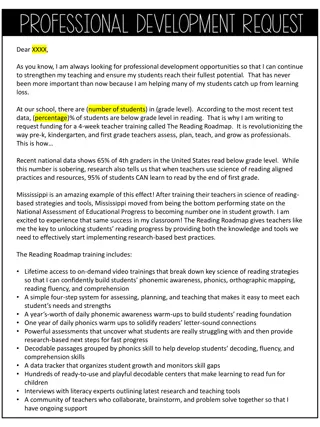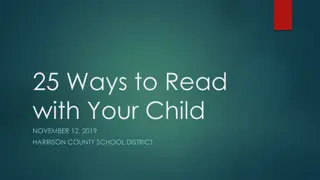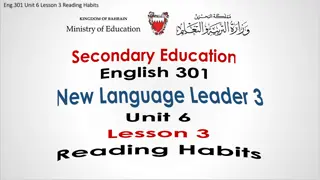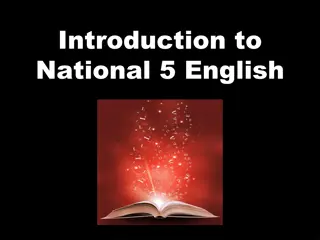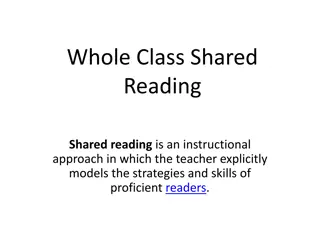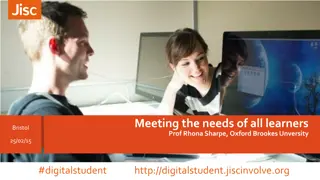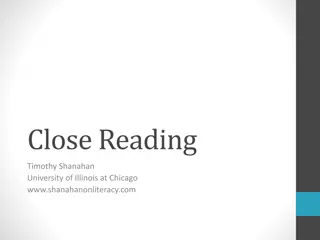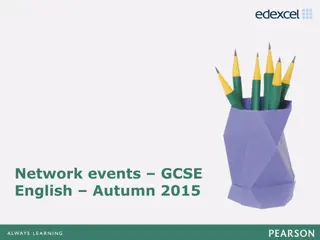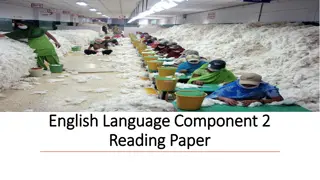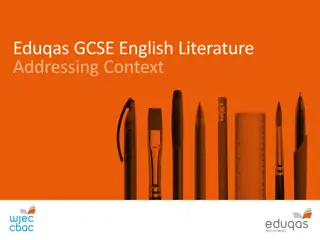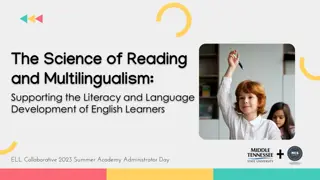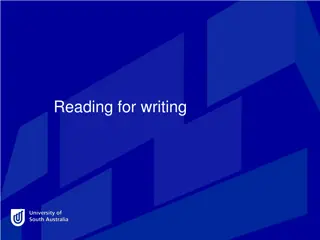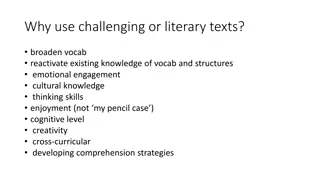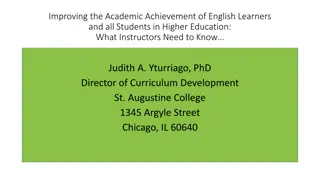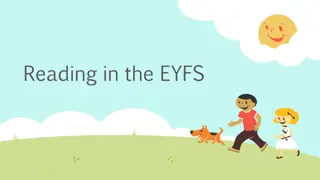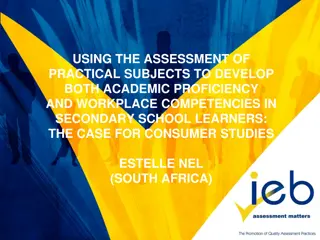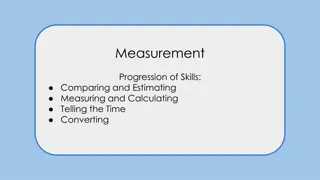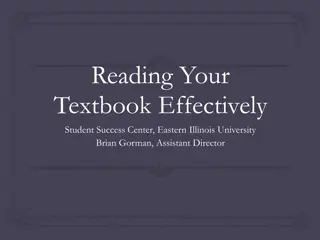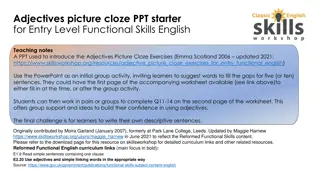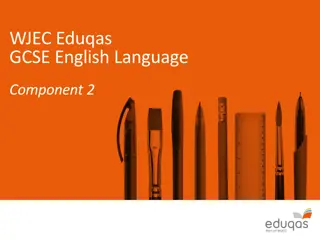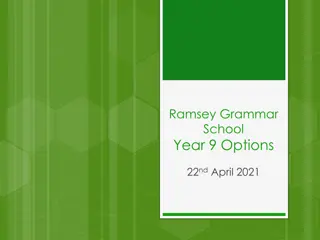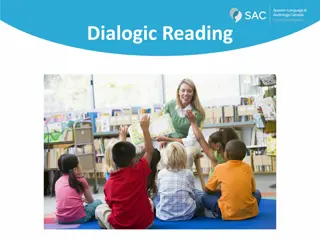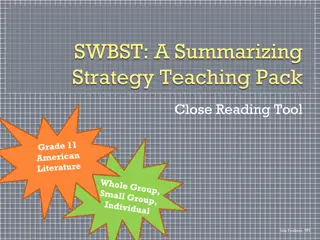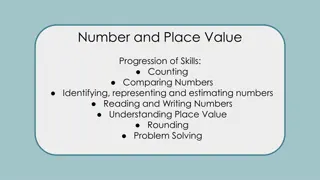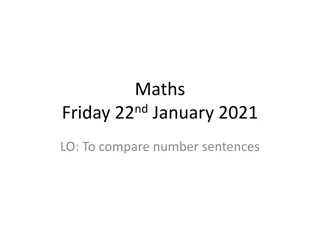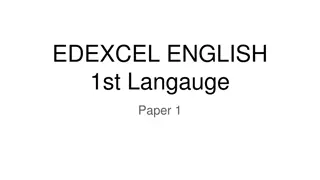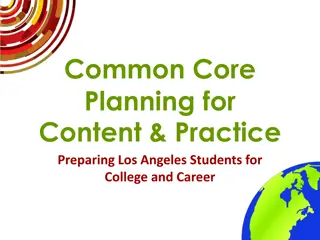Enhancing Reading Skills: Comparing Texts for English Learners
Enhance your English reading skills by comparing texts to identify similarities and differences. Practice analyzing information, ideas, and opinions in different texts, including how they are conveyed. This resource provides exercises and examples to help you develop your ability to compare and contrast texts effectively.
Download Presentation

Please find below an Image/Link to download the presentation.
The content on the website is provided AS IS for your information and personal use only. It may not be sold, licensed, or shared on other websites without obtaining consent from the author. Download presentation by click this link. If you encounter any issues during the download, it is possible that the publisher has removed the file from their server.
E N D
Presentation Transcript
L2 Functional Skills English reading Skills building comparing texts Description: swlogo September 2021. Kindly contributed by Nikki Milton, Cambridge Regional College. Search for Nikki on www.skillsworkshop.org Please refer to the download page for this resource on skillsworkshop for detailed curriculum links and related resources. https://www.skillsworkshop.org/resources/skills_building_comparing_texts For full use of hyperlinks and other features, this presentation should be run in full screen mode. Covers several Level 1 & 2 Reformed Functional Skills English reading content descriptors, including L1.10 Compare information, ideas and opinions in different texts L2.12 Compare information, ideas and opinions in different texts, including how they are conveyed Source: DfE (Feb 2018), Subject content functional skills: English https://www.gov.uk/government/publications/functional-skills-subject-content-english GCSE English reading curriculum links: A3 Compare writers ideas and perspectives, as well as how these are conveyed, across two or more texts. Source: DfE (2013), English Language GCSE subject content and assessment objectives: https://www.gov.uk/government/publications/gcse-english-language-and-gcse-english-literature-new-content Many thanks to CGP Books for permission to reproduce the texts on slides 12 and 13. https://www.cgpbooks.co.uk/
Skills Building Comparing Texts L1.10 Compare information, ideas and opinions in different texts L2.12 Compare information, ideas and opinions in different texts, including how they are conveyed Key Vocabulary compare Note the similarity or dissimilarity between similarity A similar feature or aspect dissimilarity Difference or variance conveyed To express a thought, feeling or idea so that it is understood by other people
Skills Building Level 1 Level 2 Question 15 Question 13 This is your big mark question! You are asked to compare two texts and find a piece of information that is the same in both texts. You are asked to look at two of the texts and find similar ideas from the text. You must then give a quote from each of the texts to evidence these similarities. You must then give the quote from each text that shows the information is the same. Worth six marks one mark for each similarity - two marks for each quote Worth three marks one mark for the information that is the sameand then one mark for each quote Evidence from Source 1 Evidence from Source 1 Similarity 1 Evidence from Source 1 Evidence from Source 1 Similarity Evidence from Source 1 Evidence from Source 1 Similarity 2 Question breakdown based on Edexcel Functional Skills English Qualifications
Skills Building There are 14 differences. Can you spot at least 4? How many similarities can you find? What are they? Source: https://www.mentalfloss.com/article/642229/spot-difference-pictures-autumn-forest
Skills Building Here are the 14 differences. Did you find them all? Source: https://www.mentalfloss.com/article/642229/spot-difference-pictures-autumn-forest
Skills Building Similarities found include: 1. It is Autumn in both pictures 2. A warm and sunny day Evidence which has helped us make these observations: Colours of red, orange, brown and yellow Fallen leaves on the ground Source: https://www.mentalfloss.com/article/642229/spot-difference-pictures-autumn-forest
Skills Building How many dissimilarities can you find? What are they? What is similar about these town centres? What evidence supports your idea? Similarity Evidence from Image 1 Evidence from Image 2
Skills Building What themes do these songs both share? What evidence supports your idea? Similarity 1 Evidence from Video 1 Evidence from Video 2 Similarity 2 Evidence from Video 1 Evidence from Video 2 Video sources: https://www.youtube.com/watch?v=znFArjTUCdQ ; https://www.youtube.com/watch?v=-qZxMY7FZf8
Skills Building Can you identify when and where these images are taken? What is going on? What themes do they both share? What evidence in the pictures support your ideas? Similarity Evidence from Image 1 Evidence from Image 2 Sources: https://www.nhs.uk/conditions/coronavirus-covid-19/how-to-avoid-catching-and-spreading-coronavirus-covid-19/ ; https://english.elpais.com/society/2020-03-26/coronavirus-deaths-in-spain-now- exceed-4000-with-655-in-just-24-hours.html ; https://english.elpais.com/society/2020-03-27/the-surprising-similarities-between-the-spanish-flu-and-the-coronavirus-pandemic.html
Skills Building A reminder of how you structure your answer for each level Level 1 Similarity Evidence from Text A Evidence from Text B Similarity 1 Evidence from Text A Evidence from Text B Level 2 Similarity 2 Evidence from Text A Evidence from Text B
Skills Building Text A: The Spanish Flu, 1918 Text B: Coronavirus (COVID-19) The initial response to the 1918 outbreak was to play it down, and later efforts at disinfection and social distancing proved insufficient to stop the spread of a disease that killed over 147,000 in Spain in one year. On 31 December 2019, the World Health Organisation (WHO) was informed of a cluster of cases of pneumonia of unknown cause detected in Whan City, Hubai Province, China. On 12 January 2020, it was announced that a novel coronavirus had been identified in samples obtained from cases and that initial analysis of virus genetic sequences suggested that this was the cause of the outbreak. This virus is referred to as SARS-CoV-2, and the associated disease as COVID-19. More than 100 years ago, when a flu-like disease emerged, the initial response was to laugh it off. As of 22 February 2021, over 109 million cases have been diagnosed globally with more than 2.4 million fatalities. In the 14 days to 17 February, more than 5.7 million cases were reported. Human-to-human transmission is occurring extensively. Hence, precautions to prevent human-to-human transmission are appropriate for both suspected and confirmed cases. While there are cases of coronavirus (COVID- 19) in the UK, there is a risk you can catch it or pass it on. You could still catch it or spread it even if you re fully vaccinated. On May 22, 1918, the front page of the Spanish newspaper ABC reported on a new illness, described as similar to the flu but with milder symptoms. That same month, Madrid held its annual San Isidro festivities, providing the perfect conditions for mass contagion. The new flu was lightheartedly christened Soldado de N poles (Soldier of Naples) after a song in a popular operetta of the day which, like the new disease, was extremely catchy. There are things you can do to reduce your risk of catching the virus or spreading it to other people. Do: Get vaccinated Meet people outside if possible Open doors and windows to let in fresh air if meeting people inside Limit the number of people you meet and avoid crowded places Wear a face covering when it s hard to stay away from other people particularly indoors or in crowded places Wash your hands with soap and water or use hand sanitiser regularly throughout the day The Spanish flu pandemic of 1918, the deadliest in history, infected an estimated 500 million people worldwide about one-third of the planet s population and killed an estimated 20 million to 50 million victims, including some 675,000 Americans. Making Connections In pairs, discuss what these two texts have in common? Can you prove this with evidence from the text? Remember how to structure your answer. Sources: https://www.nhs.uk/conditions/coronavirus-covid-19/how-to-avoid-catching-and-spreading-coronavirus-covid-19/ ; https://english.elpais.com/society/2020-03-26/coronavirus-deaths-in-spain-now-exceed- 4000-with-655-in-just-24-hours.html ; https://english.elpais.com/society/2020-03-27/the-surprising-similarities-between-the-spanish-flu-and-the-coronavirus-pandemic.html
Skills Building Frances.jones@azmail.co.uk To: Naomi and Frances gave different ideas about their trips abroad. Subject: Trip to Mexico Dear Frances, a) Compare how the ideas about Mexico are different between the two emails, using an example from each email to support your answer. I am so glad to be back in England. I really didn t have a great time on my trip. The heat was unbearable, and I found the cities overcrowded and far too noisy. The streets were lined with litter and I just found the place incredibly dreary and depressing. I was expecting to be blown away by the countryside but, while it was stunning at times, I was left disappointed by how bare much of it was. To be fair, all the people I met were extremely friendly and helpful. I don t think I will be going back, although I am glad I went. Anyway, I hope we can arrange to meet soon! Evidence from Email 1 Evidence from Email 2 difference See you around! Naomi To: Frances.jones@azmail.co.uk Trip to Mexico Subject: b) Show a difference in the way that ideas about Mexico are conveyed in the emails, using an example from each email to support your answer. Dear Naomi, Oh No! I m sorry to hear that. We must meet up and chat about it. I had a really good time when I was in Mexico. I found it to be a beautiful country that is full of life. I know what you mean about everyone being friendly there were so many smiling faces! I only went to quieter places and found the landscape to be beautiful in an expansive, empty kind of way. I did also explore other parts of the country and there were vast mountain ranges and rolling hills. Maybe you went at the wrong time of year? I wouldn t recommend checking out the countryside in summer. Evidence from Email 1 Evidence from Email 2 difference See you soon! Frances Source: CGP Functional Skills English Level 2: New! 10-Minute Tests ISBN 9781789084870
Skills Building Members have your say! Start a new thread Post a reply Why are our trains cancelled so often? Mo Mo Forum Member Compare how the ideas about rail travel are similar between the two forum posts. Use an example from each post to support your answer. Posted: 27th October 16:12 I am so fed up with the trains in the UK constantly being delayed or cancelled for seemingly no reason. I was stunned to hear that my last train had been delayed because of leaves on the line when I was visiting my father. How can a train be stopped by leaves? I can see how ice could be a problem but not leaves or heat. I do realise that the transport system must be quite difficult to manage, but it just seems to shut down far too easily. I went to Japan last year and the trains were running during a massive snowfall. If other countries railways can cope with harsh weather, why can t the railways in the UK? I don t like to rant, but it is so unbelievably frustrating! Can anyone explain this to me???? Evidence from Forum Entry 1 Evidence from Forum Entry 2 difference Evidence from Forum Entry 1 Evidence from Forum Entry 2 Why are our trains cancelled so often? Stefan Stefan Forum Member difference Posted: 27th October 17:02 I ve had similar experiences when travelling by train and I agree that it can be hugely annoying! I am afraid that I can t offer any explanation as to why leaves cause a delay, but I know heat can cause serious problems. Heat causes the metal tracks to expand and eventually buckle and curve. This is why sometimes trains are cancelled when it s really hot the overheated tracks are not fit to have trains running on them! However, it is still worth sticking with British trains. Trains are still an incredibly popular way to travel around the UK, and they are also far more environmentally friendly than cars. British railways aren t all bad they re among the top 10 railways in Europe. Keep the faith Mo! Source: CGP Functional Skills English Level 2: New! 10-Minute Tests ISBN 9781789084870
Skills Building Comparing Texts L1.10 Compare information, ideas and opinions in different texts L2.12 Compare information, ideas and opinions in different texts, including how they are conveyed Key Vocabulary compare Note the similarity or dissimilarity between similarity A similar feature or aspect dissimilarity Difference or variance conveyed To express a thought, feeling or idea so that it is understood by other people
